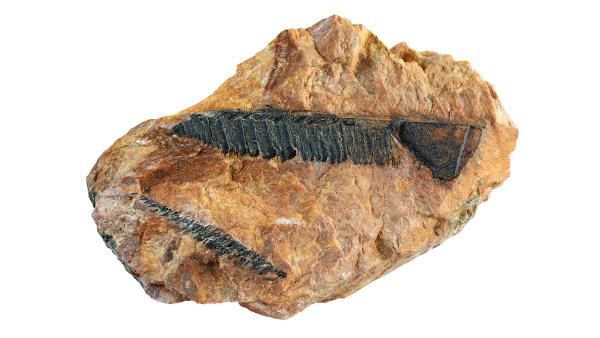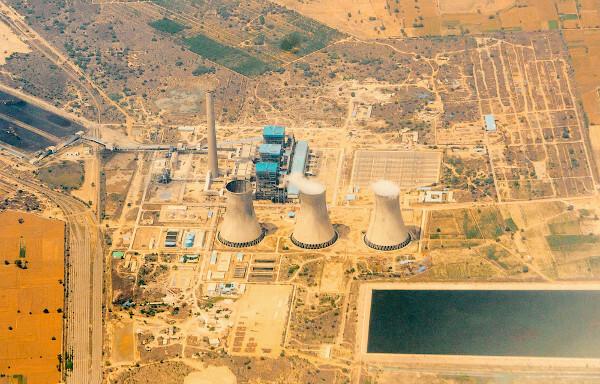O thorium, symbol Th and atomic number 90, is an actinide. It is an element with about 30 isotopes in all, six of which are found in nature. It has an oxidation state of +4 and forms compounds with most of the nonmetals of the Periodic Table. It has an abundance comparable to that of lead in the earth's crust and can be commercially extracted from some minerals, such as monazite.
Thorium is almost always produced as a by-product of obtaining other metals and stands out for its good thermal resistance, which makes it suitable for spacecraft and missiles. Thorium oxide, ThO2, has the highest melting point, in addition to having a high refractive index. thorium too has been studied as a fuel for nuclear power plants, whose application has advantages over conventionally used uranium.
Read too:Actin — actinide that can be used to treat cancer
Topics in this article
- 1 - Summary about thorium
- 2 - Thorium properties
- 3 - Characteristics of thorium
- 4 - Where can thorium be found?
- 5 - Obtaining thorium
- 6 - Applications of thorium
- 7 - Thorium and radioactivity
- 8 - History of Thorium
summary about thorium
Thorium is a metal belonging to the actinide group.
It has more than 30 isotopes, six of which are found in nature.
It is chemically reactive and forms compounds with most nonmetals.
It has a good concentration in the earth's crust, close to that of lead.
It is commercially extracted from minerals in which it is not the main element, such as monazite and allanite.
It has application in the aerospace industry, in the manufacture of high quality lenses, and is emerging for use as nuclear fuel.
It was discovered in 1828 by the Swedish chemist Jöns Jacob Berzelius.
Thorium properties
Symbol: Th
atomic number: 90
atomic mass: 232.03806 c.u.s.
electronegativity: 1,3
Fusion point: 1750 °C
Boiling point: 4788 °C
Density: 11.72 g.cm-3
Electronic configuration: [Rn] 7s2 6d2
Chemical series: actinides
Do not stop now... There's more after the ad ;)
characteristics of thorium
Thorium, symbol Th and atomic number 90, it's a metal belonging to the actinide group. When in its metallic form, it has a bright silver color, in addition to having the highest melting point among all actinides. However, with the exception of actinium, Th has the lowest density among the other elements in this category.
There are at least 30 isotopes of thorium, however, only those of mass 227, 228, 230, 231, 232 and 234 are natural (found in nature). The others are produced in the laboratory or derived from decay reactions of other elements made in the laboratory, and therefore are considered synthetic.
Among the natural isotopes, the 232Th, whose half life is in the range of 14 billion years. This is because much of the thorium found in nature comes from decay reactions of natural isotopes of uranium, however, the 232Th is the only one found in uranium-free ores.
THE Thorium chemical reactivity is high: at high temperatures, it is easily attacked by oxygen, hydrogen, nitrogen, halogens and sulfur. Carbon and phosphorus are able to make binary compounds with Th.
When finely divided, Thorium is even pyrophoric (it spontaneously ignites on contact with air), however, when in raw form and under ambient conditions, it reacts slowly with air, but even so, corrosion is perceived.
With acids, thorium reacts vigorously with the hydrochloric acid, leaving behind a black residue of the formula ThO(X)H, where X is a mixture of the OH ions- and Cl-. With the other acids, Th practically does not react.
Where can thorium be found?

the thorium has a good mass participation in the earth's crust. It is estimated to be three times more abundant than the tin, twice as abundant as the arsenic and as plentiful as lead and molybdenum. Data indicate that its concentration in the earth's crust is 10 ppm (part per million or milligram per kilogram), while that of lead, for comparison, is 16 ppm.
It is found in nature in the tetravalent form., Th4+, and often associated with the U4+, Zr4+, Hf4+ and Ce4+, plus some trivalent rare-earth metals (charge 3+) with ionic radius similar. In the oceans, the concentration of Th4+ no more than 0.5 x 10-3 g/m³, as the tetravalent form is poorly soluble.
Thorium and uranium oxides, ThO2 and OU2, have similar structures and, therefore, can form a solid solution. If the mixture has up to 15% by mol of ThO2, we are facing the uraninite ore. However, if there is more than 75% by mol of ThO2, the ore is called thorianite. This is why thorium is an impurity that is always present in pitchblende mineral samples.
Another mineral with a high thorium content is thorite, a thorium silicate (ThSiO4) by which the element was discovered, but both thorite and thorianite are rare minerals.
So, commercially, main sources of thorium are monazite, allanite and zircon (or zirconia). In these minerals, and in the others shown in the table below, thorium is a minority constituent.
Mineral |
Th content (ppm) |
monazite |
25,000 to 200,000 |
allanite |
1000 to 20,000 |
zircon |
50 to 4000 |
titanite |
100 to 600 |
epidote |
50 to 500 |
apatite |
20 to 150 |
magnetite |
0.3 to 20 |
Monazite, a golden or brownish rare-earth phosphate, is an important source of thorium in the form of ThO2, as it is distributed over almost the entire planet, and some deposits are quite extensive. Of note are deposits in India, Egypt, South Africa, the United States and Canada, with 200-400 kton (kilotons, 10³ tons) of ThO2 in each country.
Read too: Americium — actinide widely used in smoke detectors
Thorium Obtaining
As thorium is almost always found associated with metals of great commercial interest (such as niobium, uranium and zirconium), like lanthanides, it is produced as a by-product.
At the In the case of monazite, there are two forms to start obtaining thorium:
attack by strong acids, capable of transforming phosphate ions (PO43-) in H2DUST4- and H3DUST4, thus leaving the metal ions in the form of water-soluble salts;
or use strongly alkaline solutions, which will convert insoluble phosphates into hydroxides insoluble metals, which can later be dissolved with acid after separation of the supernatant.
In the case of the acid route, after solubilization, the thorium is separated from the other rare earths by precipitation after the adjustment of the pH at 1.0. The precipitate, a thorium phosphate, is then treated with alkaline solution to remove phosphates. unwanted substances, and then dissolved in nitric acid, to be purified with tributyl phosphate in kerosene.
In the alkaline route, thorium hydroxide is separated from the other rare-earth hydroxides by adding hydrochloric acid and adjusting the pH between 5.0 and 6.0, which only precipitates the thorium compound. From there, thorium is also dissolved in nitric acid and further purified with tributyl phosphate in kerosene.
In both cases, thorium is recovered in the form of Th (NO3)4, i.e. thorium IV nitrate.
For the production of metallic thorium, the reduction of Th halides and dihalides by sodium, potassium or calcium has already been used. THE electrolysis can also be applied, wherein thorium chloride or fluoride is fused to sodium or potassium chloride. The ThO2 it is also a source of metallic thorium, through reduction processes, as is the case of the Sylvania process (in which calcium is the reductant).
Thorium applications
the thorium has great thermal resistance. The metal alloy between thorium and magnesium (Mag-Thor) is used in spacecraft and missiles. The ThO2, oxide highest melting point, has a high refractive index and low dispersion, being used in high quality optical lenses.
Thorium compounds can also be used as catalysts in important industrial processes, such as oil cracking, the synthesis of sulfuric acid and the Ostwald process for nitric acid synthesis.
However, thorium has excelled in nuclear chemistry. It has an advantage over uranium: virtually all natural thorium is in the form of 232Th, not needing enrichment. Thorium-232 is not fissile, however, it can be converted via neutron absorption to 233U, an excellent fissile fuel.
Another point in favor of using it for energy production is that Thorium residues become safe in a shorter period of time compared to uranium residues. While uranium waste is hazardous for thousands of years, about 83% of liquid thorium fluoride waste would be safe in 10 years, while the remaining 17% would be safe in about 300 years.

no wonder the India, with a high amount of thorium deposits and a low amount of uranium, seeks the development of nuclear power plants using thorium.
Check it out on our podcast:How do nuclear power plants work?
Thorium and radioactivity
the thorium is not easily taken by our body, in addition to having low concentrations in the air, in the water we drink and in food. Thus, we are unlikely to see problems caused by thorium in the general population. Most of the studies evaluated workers who were exposed to large amounts of this material, such as miners.
about the radioactivity, the International Agency for Research on Cancer (IARC) has classified thorium as a human carcinogen. However, the US Department of Health and Human Services says that It is still too early to conclude that thorium is carcinogenic to humans.
From 1928 to 1955, it was used as a contrast in radiological examinations, the Thorotrast, which contained 25% ThO2 and was slightly radioactive. A greater number of cancers of the liver, gallbladder and blood were seen in patients who received large doses of this contrast.
history of thorium
In the year 1815, the chemist Jöns Jacob Berzelius received a sample of a rare mineral from Falun District, Sweden. At the time, the chemist assumed that there would be a new element in this mineral, which he called thorium, in reference to the Scandinavian god of thunder and war, Thor. However, 10 years later, the mineral was confirmed to be a simple sample of xenotime, yttrium phosphate.
In 1928, however, Berzelius received a new mineral sample from the Norwegian reverend and mineralogist Hans Morten Thrane Esmark. In this new mineral, finally, the Swedish chemist discovered a new element, giving it the same name. Consequently, he named it tory (thoria), which later had its name changed to torita (thorite).
By Stefano Araújo Novais
Chemistry teacher
